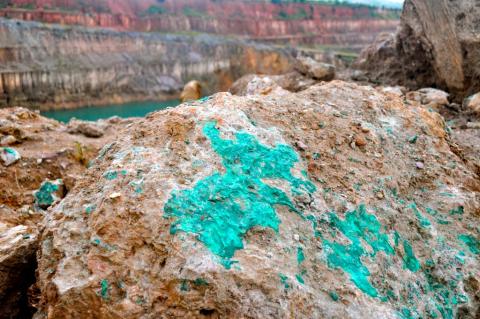
Peru hosts the 7th EITI Global Conference
Peru hosts the 7th EITI Global Conference
Peru’s EITI illustrates, in many ways, the journey of the EITI globally over the last decade. When the EITI was established, Peru was experiencing rapid growth in the extractive industries. The sector was – and continues to be – controversial. While the sector brings much needed investment, infrastructure and employment, the social and environmental impacts of the oil, gas and mining sectors are a source of considerable concern and conflict. The public was demanding greater transparency about the sector.
From 2004 to 2104, revenues from mining and oil and gas have grown tremendously in Peru. EITI Reports have disclosed more than USD 40 billion in tax payments, and shown how these revenues have been allocated. Peru’s first EITI reports focused on disclosing companies’ payments and government revenues. They were also one of the first EITI countries to address the distribution of revenues from the central government to the provinces as regulated by law (so-called “canon” both in mining and hydrocarbons). As a result of this, more than half the revenues are spent by the regions.
This was not easily achieved. There were a number of obstacles. Peruvian laws prevented the tax authorities from disclosing tax payer’s information and a number of Peruvian companies were not comfortable with disclosing figures disaggregated company by company. There is no legislation mandating the EITI. Instead, stakeholders have worked together to build support for solutions. The latest EITI Reports provide comprehensive and disaggregated data.
Reflecting on this decade of EITI implementation, Epifanio Baca, a long-time serving civil society representative on Peru’s EITI National Commission and former member of the EITI International Board, said “disaggregated reports marked a significant step in bringing useful information for the debate about tax deals and the specific contribution of the companies in the areas where resources are extracted”.
The next step - how the money is spent
With extractive activities spread over most of the Peru’s 25 departments and 430 municipalities, Peru’s EITI priority was to bring more transparency to how revenues from the extractives were distributed and used. Eduardo Rubio, a representative of the companies in the EITI National Commission, pointed out: “we knew from the start that revenue collection was not a particularly problematic area in the management of extractive revenues and that the value added of the EITI process was in using it to bring transparency to how these resources are spent. In particular, the quality of expenditures in the regions and municipalities were, and continue to be, a major concern”. Although Peru has halved poverty in the years of the commodity boom, discontent in the extractive regions is still widespread.
Piura and Moquegua regions: Institutionalizing transparency
The regional governments of Piura and Moquegua agreed in 2015 to implement the EITI at the subnational level with a focus on how the money was spent. The pilot EITI reports of these two regions have started to provide useful information for, in Mr Baca words, “having a debate on policies to improve the management of the 50% of extractive resources that are managed by regional presidents and local majors”. Mr Rubio added “We are giving priority to piloting EITI implementation in the regions and we are working to bring the EITI to more and more regions in the near future”. Piura and Moquegua pilots have revealed that most of extractive revenues were spent in projects in accordance to the regional development plans with a fraction destined to paying public payroll and servicing debt. In Piura, for example, these resources financed 63% of energy projects, 40% of water sanitation, 39% of the health budget and 52% of investment in education.
Guillermo Shinno, Peru’s Vice-Minister of Mines and EITI Champion, highlighted “The EITI has become an entrenched practice not only of transparency but of dialogue with industry and citizens on how extractive resources are governed. The EITI contributes to have citizens better informed about how revenues from the extractive industries are distributed and used
The challenges ahead: from report to results
The Peruvian EITI process also illustrates one of the main challenges the EITI faces: shifting the focus from “reports to results”. As the outgoing EITI Chair Clare Short has written: “Publishing reports is not a goal in itself. We must do better in recommending necessary reform and trying to ensure that the reforms are implemented. Transparency is not an end in itself” . As commodity prices has fallen, EITI Peru could use the EITI data to inform the debate on how expenditures in the regions and municipalities will need to be adjusted and how industry planned projects will be affected.
Agenda Peru
One priority is to ensure that the EITI is linked to other efforts, especially those aimed at reducing tensions in extractive regions and communities. This week, Peru launched it 10th (2014) EITI Report. It is discussing the findings from the regional EITI pilots. Together with Canada, Peru it has launched a Partnership for Sustainable Mining. This partnership builds on the G7 Fast Track Partnership to Support Transparency in the Extractives Sector in Peru that sought to coordinate the different governance and transparency in the extractive sector efforts in Peru.
For more information on the Agenda Peru: http://www.minem.gob.pe/_detallenoticia.php?idSector=3&idTitular=7203
Related content



